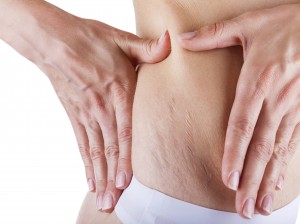 One of the essential elements in determining the best candidates for liposuction is a determination of appropriate skin elasticity. When lipo itself focuses on adipose tissue rather than the skin, why is the condition of the skin itself such an important qualifier?
One of the essential elements in determining the best candidates for liposuction is a determination of appropriate skin elasticity. When lipo itself focuses on adipose tissue rather than the skin, why is the condition of the skin itself such an important qualifier?
The Nature of Skin
Skin is designed to have some degree of natural elasticity. This accommodates body shapes of all types and sizes, and allows the body to increase or reduce fat stores as needed. Skin also needs the adaptability to conform to rapid and extreme changes, like those brought about by pregnancy and nursing.
However, the elastic properties of the skin are not without limitation. There are a number of reasons why the skin’s bounce-back capability eventually becomes compromised:
- Repeated pregnancies: Although the body is capable of an impressive degree of flexibility in order to nurture a growing baby, at some point the skin may become overstretched and unable to return to its former contours.
- Excessive weight gain: The skin’s elasticity allows for the expansion of fat cells. However, a period of many years spent stretched to capacity may compromise the ability to adapt to the changing contours of weight loss.
- Age: Skin’s elasticity declines as a natural byproduct of age, due in part to the decrease in collagen production along with cumulative damage from the sun’s UV rays as well as life events such as those mentioned above.
As liposuction removes the supportive structure of fatty tissue from below the skin, there are two possible options: the skin will conform to the new contours, or will lack the suppleness to do so. For patients who fall into the latter category, incorporating additional body contouring to excise and tighten lax skin will be preferable to performing liposuction alone.










